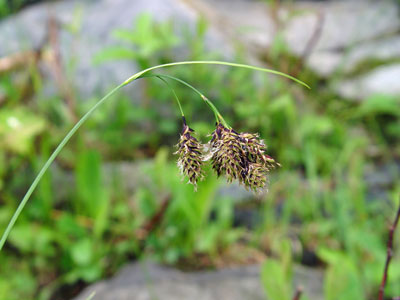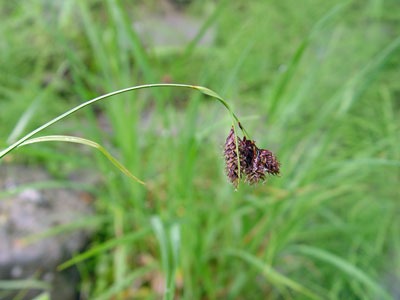DACF Home → Bureaus & Programs → Maine Natural Areas Program → Communities, Plants, and Animals → Rare Plants → Carex atratiformis
Carex atratiformis Britt.

Black Sedge
- State Rank: S2S3
- Global Rank: G5
- State Status: Special Concern
Habitat: Brooksides, ravines, and damp slopes. [Rocky summits and outcrops (non-forested, upland); Non-tidal rivershore (non-forested, seasonally wet); Alpine or subalpine (non-forested, upland)]
Range: Labrador to Yukon , south to the mountains of New England, and the vicinity of Lake Superior.
Aids to Identification: Identification of species of the genus Carex is usually difficult and dependent upon rather technical characters. C. atratiformis is in the section Atratae and it is distinguished by the following characteristics: tufted growth, 30-90 cm high; stems much longer than the main leaves; spikes grow on stalks 1-4 cm long; perigynia are elliptic, flattened, and 2.6-3.9 mm long.

Ecological characteristics: In Maine this sedge is typically found along calcareous seeps, cliff bases, and open riverbanks in alpine or boreal areas.
Phenology: Fruits mid-June - early September.
Family: Cyperaceae
Synonyms: Carex atrata L. ssp. atratiformis (Britt.) Kükenth; Carex ovata Rudge
Known Distribution in Maine: This rare plant has been documented from a total of 15 town(s) in the following county(ies): Aroostook, Franklin, Oxford, Piscataquis, Somerset.
Reason(s) for rarity: At southern limit of range; scarcity of suitable habitat.
Conservation considerations: Maintain hydrologic integrity of its rivershore habitat, including the natural disturbance by water and ice. Non-riverine situations appear to persist with localized natural disturbance.